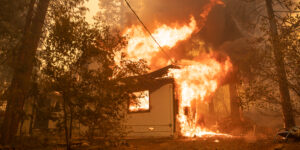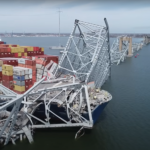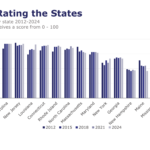According to a recent CoreLogic Press Release, the 2018 Camp and Woolsey Wildfires in California caused devastating losses between $15 and $19 billion. Because exposure to wildfire most often results in a total loss of property, the destruction caused by these catastrophic events has been a personal and financial tragedy for many families. These and other natural hazards have forced Insurance Carriers to reevaluate the need to have better information and tools to ensure homeowners carry the right amount and type of coverage needed to be made whole again if a natural disaster should destroy their property.
Underinsurance can have significant impact on the lending industry as well. According to Frank Nothaft, chief economist for CoreLogic, “The disruption of a family’s regular flow of income and payments, as well as substantial loss in property value, can trigger mortgage default; especially if homeowners are underinsured and cannot afford to rebuild.”
In a new report, CoreLogic analyzes at a zip code level, potential underinsurance issues in four areas of the U.S. known to be at very high to extreme risk of a natural hazard. Although not the only areas of the U.S. where natural hazards occur, the regions addressed in the report include storm surge risk in the Northeast Atlantic and Gulf Coasts, wildfire risk in California, and tornado risk in Oklahoma; areas of the country where a single catastrophic event could consequently bring total property loss to thousands of homes.
Other significant reasons for the real estate industry to pay attention include:
- Undervaluing properties for many years can create problems beyond the one-time claim. This issue is especially exposed during catastrophic (CAT) events when even partial losses quickly exhaust coverage limits.
- Moreover, if building and labor costs are not continually monitored, claims estimates may be inaccurate due to supply and demand fluctuations and in extreme situations, be even further undervalued by the effects of demand surge, which according to CoreLogic research, can exceed 30 percent or more.
- Inadequate insurance valuation keeps coverage limits artificially low and, if a CAT event occurs, insurance companies risk losing loyal customers. They also risk brand damage issues due to the negative online feedback from dissatisfied policyholders.
- Fourteen U.S. states prohibit agents and homeowners from knowingly underwriting policy limits greater than the replacement cost estimate. Removing the choice to ensure total loss coverage only further exasperates the need for accurate reconstruction costs in high-risk areas.
- The lending and mortgage servicing industries rely on the insurance industry to correctly determine accurate reconstruction costs within a homeowner’s policy. When properties are underinsured, the asset which collateralizes the loan has additional risk. In other words, if homeowners can’t afford to rebuild their home after a CAT due to underinsurance, the property value decreases, and they could subsequently default on their mortgage.
Today’s best practice for reconstruction cost estimating uses information specific to each home and its location along with detailed and extensive construction knowledge. Current localized costs of labor and building materials are applied to create a reconstruction cost estimate that is unique to the specific home at the time of the estimate. The latter is especially crucial after a catastrophic event such as Hurricanes Florence and Michael in 2018, as well as Hurricane Irma in 2017, which affected building and labor costs in North and South Carolina, Florida, and Georgia. This best practice produces objective estimates without the inaccuracies that are introduced by subjective quality judgments, unsophisticated estimating tools, or simple inflation adjustments.
The financial impact of underinsurance touches everyone; this is especially true after a catastrophic event where widespread property damage can cost billions of dollars.
Click here to access the full report.




















 E&S Property In Focus: Competition Up, Price Momentum Waning
E&S Property In Focus: Competition Up, Price Momentum Waning  Maritime Law Invoked By Ship Owner in Baltimore Bridge Collapse to Cover Salvage Costs
Maritime Law Invoked By Ship Owner in Baltimore Bridge Collapse to Cover Salvage Costs  IBHS: Virginia Edges Florida Out of First Place in Building Code Adoption
IBHS: Virginia Edges Florida Out of First Place in Building Code Adoption  Uncertainty Keeps Prices Up; No Prior-Year Loss Development: Travelers
Uncertainty Keeps Prices Up; No Prior-Year Loss Development: Travelers 